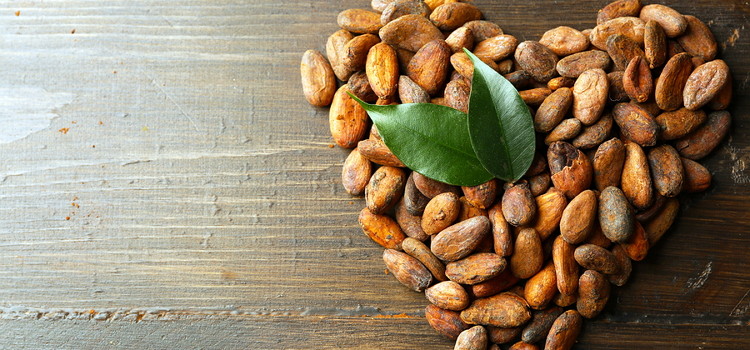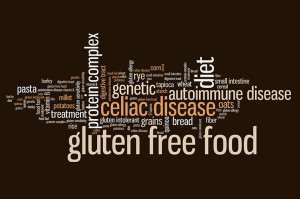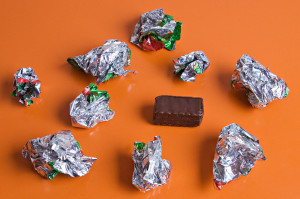For as long as we’ve known where to find it, chocolate has been a treasure. The Aztecs believed that cacao seeds were a gift from Quetzalcoatl, the God of wisdom, and valued them so highly that they were used as currency. When chocolate arrived in Europe in the 1500s, it was reserved for royalty.
Today, chocolate is widely available around the world, regardless of our wisdom or wealth. But that doesn’t mean we value it any less!

Most of that value comes from its taste. After all, our taste buds are programmed to like its flavor, especially when sweetened. But what many people do not realize is that there is plenty to admire in chocolate from a nutritional standpoint.
While our love of chocolate may be unwavering, the science behind it is constantly evolving. Every year, scientists carry out studies on the nutritional benefits of chocolate—specifically, its basic cacao bean component—and how they affect us. 2015 was no different. As we celebrate Valentine’s Day 2016, here’s a look at some of the studies on chocolate carried over the last year:
Chocolate May Improve Insulin Resistance
In this study, thirty-seven healthy men and women (aged 40-80) were enrolled in a randomized trial. Their risk factors for cardiovascular disease were measured before and after a four-week period of daily flavonoid supplements. Participants tested were given supplements of epicatechin, quercetin-3-glucoside, or placebo capsules.This was done in order to test the effect that flavonoid-rich foods (such as cocoa and tea) have on heart disease.
The study found that the epicatechin in cocoa (as well as in tea) was associated with improved insulin resistance, which in turn is associated with heart health.
What does this mean for you? We’ve known for years that chocolate has been credited with cardioprotective effects. What we know now, though, is why this is. We can now narrow down the effect at least in part to epicatechin, which may improve insulin resistance over time.
Chocolate May Ease Age-Dependent Vascular Stiffness
As we age, we can expect vascular stiffness and hypertension. The good news? Regular cocoa consumption has been suggested in research to improve vascular function in both healthy young people and in the elderly.
In a recent study, 22 young men (under the age of 35) and twenty elderly men (ages 50-80) were asked to drink either a drink with cocoa flavanols or a nutrient-matched drink without cocoa flavanols for 15 days. At the end of the interventional period, the researchers measured the participants’ flow-mediated vasodilation (FMD, that is, the widening of their blood vessels).
Results showed that FMD improved among both young and elderly participants who had been drinking cocoa flavanols during the study.
What does this mean for you? If you take in cocoa flavanols regularly, it may support your body’s natural protective mechanisms against age-related cardiovascular risk.
Chocolate is Associated with Improved Cognitive Function in the Elderly
Research has indicated a connection between flavanol consumption and improved cognitive function.
In a study examining this effect, 90 elderly participants without cognitive dysfunction were randomly assigned to drink one of three drinks for eight weeks: the assigned drink was either high, intermediate, or low in flavanol. Using three different tests, cognitive function was assessed both at the start and the end of the eight-week study. Results showed that scores significantly improved among all three treatment groups, but the measure of improvement was significantly higher in the group that was served the high-flavanol drink. The amount of flavonols in the latter, 993 mg, is equivalent to about 1 ounce (28⅓ grams) of 80% cocoa dark chocolate or ¼ cup (21 grams) pure cocoa powder.
What does this mean for you? Regularly taking in cocoa flavanols may support healthy cognitive function as you age.
Chocolate May Support General Cardiovascular Health
Cocoa flavanol intake has been shown to improve the function of blood vessels in patients who are at high risk for heart disease, as well as in healthy, middle-aged individuals at a low risk of heart disease.
A study in 100 healthy, middle-aged (35-60 years old) men and women randomly assigned to consume either a drink with cocoa flavanols or a nutrient-matched drink that did not have cocoa flavanols
found that regular cocoa flavanol intake improved surrogate markers of cardiovascular risk.
What does this mean for you? Whether or not you are at high risk for cardiovascular disease, you may benefit from regular cocoa flavanol intake.
Beans Before Bars
We recommend you get your cocoa flavanol fix from cacao beans or nibs, increasingly available in health-oriented shops (including online) from Fair Trade sources. A small piece of dark chocolate with a high percentage of cocoa (70% or more) is the next best thing. It is recommended to avoid highly sweetened types, as even flavonols can’t completely undo the disadvantages of too much refined sugar.
Puffed Cacao Beans Have a Higher Antioxidant Capacity
When compared to roasted cacao beans, puffed beans showed the highest polyphenols and flavonoid quantities—theobromine, catechin, epicatechin, and procyanidin B2.
What does this mean for you? Though roasting is more common, puffing cacao beans could be a healthy alternative to roasting as chocolate is processed.
Cheap Chocolate Could Benefit from the Mangosteen Rind
Mangosteen is a tropical fruit, most often found in Thailand, Indonesia, and Malaysia. It has a sweet pulp and a hard rind, which is usually discarded. As it turns out, the mangosteen’s rind is actually quite rich in bioactive compounds. Because of the xanthones, procyanidins, and anthocyanins found in mangosteen rind, it has traditionally been used in Thai medicine. Now, it might be time to use it in chocolate.
This study looked at the use of mangosteen rind as a powder used in both graded dark chocolates and in “compound” chocolates—that is, typically cheaper chocolates made from cocoa, sweeteners, and vegetable fat. Mangosteen rind powder was found to significantly improve the polyphenol content by 13% in dark chocolates and by 50% in compound chocolates, all without affecting the taste.
Mangosteen rind is typically seen as waste, and could easily enhance the nutritional benefits of chocolates. This is particularly helpful in cheap, low-cocoa compound chocolates, as their low cocoa level means they are already missing out on the amount of cocoa flavanols that could otherwise benefit the consumer.
What’s Next?
In the long-term, we can hope for chocolate to have some big changes on a small scale. We’ve already made the most significant jumps in terms of flavor, especially if you figure in the hundreds of years it took us to add sugar and transition cocoa from a liquid drink to a candy bar.
Today, the changes we see in chocolate are not about taste or shape—they’re about our health. How can we take this thing we love, make it better for us, and keep the things we’ve always loved about it close to home?
This past year, scientists thought about puffed cacao beans and powdered mangosteen rinds. Maybe some of us thought about trading a cheap, guiltily-eaten candy bar for a small, well-crafted piece of dark chocolate to be savoredat the end of each day. Here’s to another year of self-improvement and discovery, and another year of chocolate.
Enjoy your chocolate but stay away from THESE 5 foods!
Sources
- Dower, J. Effects of the pure flavonoids epicatechin and quercetin on vascular function and cardiometabolic health: A randomized, double-blind, placebo-controlled, crossover trial. In: American Journal of Clinical Nutrition. Researchgate.net. 2015 Feb 15. Retrieved 2016 Feb 4.
- Heiss, C. Impact of cocoa flavanol intake on age-dependent vascular stiffness in healthy men: a randomized, controlled, double-masked trial. In: Age. Ncbi.nlm.nih.gov. 2015 May 27. Retrieved 2016 Feb 4.
- Mastroiacovo, D. Cocoa flavanol consumption improves cognitive function, blood pressure control, and metabolic profile in elderly subjects: the Cocoa, Cognition, and Aging (CoCoA) Study—a randomized controlled trial. In: American Society for Nutrition. Ajcn.nutrition.org. 2014 Dec 17. Retrieved 2016 Feb 4.
- Richards, L. Mangosteen rind ups ‘cheap chocolate’ polyphenols by 50%: Research. Nutraingredients.com. 2016 Jan 21. Retrieved 2016 Feb 4.
- Sansone, R. Cocoa flavanol intake improves endothelial function and Framingham Risk Score in healthy men and women: a randomised, controlled, double-masked trial: the Flaviola Health Study. In: The British Journal of Nutrition. Ncbi.nlm.nih.gov. 2015 Oct 8. Retrieved 2016 Feb 4.
- SuJung, H. Physicochemical properties and Antioxidant Capacity of Raw, Roasted and Puffed Cacao Beans. In: Food Chemistry. Researchgate.net. 2015 Aug 29. Retrieved 2016 Feb 4.




What is the best chocolate to eat
Hi, Angela. Chocolate that has at least 70% cacao solids is recommended.